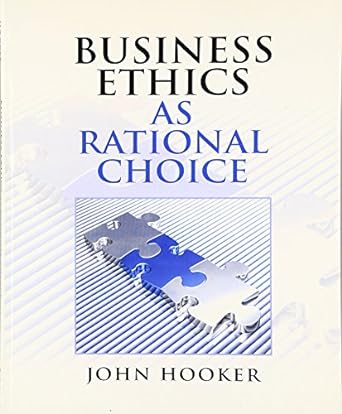Fraud at Interspeed Corporation.20 Interspeed Corporation had just gone public, and Senior Vice-President for Sales Arthur Goodwin
Question:
Fraud at Interspeed Corporation.20 Interspeed Corporation had just gone public, and Senior Vice-President for Sales Arthur Goodwin was keen to meet annual revenue targets. The fourth quarter target, for example, was $3 million, but the books showed only $1.9 in revenue. Goodwin decided he had to do something. He persuaded Solunet Inc. to take delivery of $1.2 million in inventory and hold it until another Interspeed customer bought it shortly after the new year began. Solunet was allowed to return the goods to InterSpeed if it couldn’t sell them to the third party. Goodwin counted the $1.2 million as revenue and so pushed fourth-quarter revenue to $3.1 million, slightly above the target. Goodwin’s conduct was a clear violation of GAAP. Solunet didn’t actually buy the goods, because it didn’t commit itself to paying for them. So there was no revenue to report.
As it turned out, the customer Goodwin counted on wouldn’t buy the inventory. So Goodwin arranged for another company, I-Way, to buy or lease the equipment.When I-Way could not come up with the money, Goodwin transferred funds to I-Way, which leased the goods from a leasing agent. The leasing agent bought the goods from Solunet, which used the money to pay Interspeed, completing the circle.
Goodwin kept digging himself into a hole. In another incident, he forged a signature on an altered contract to create the impression that Interspeed had made a $6.4 million sale. Before it was all over, he had overstated the company’s revenues by 60%, or $9 million. In a June 2006 Federal jury trial, Goodwin was convicted of securities fraud for his activities at Interspeed. He was sentenced to 30 months in jail, followed by a three-year supervised release. The Securities and Exchange Commission (SEC) also brought a civil action against Goodwin for the same offenses. In May 2007, he settled with the SEC by agreeing never to serve as an officer or director of a public corporation and by turning over $100,521 in earnings that resulted from his fraud. The payment was waived on grounds of financial hardship.
It doesn’t take rocket science to show that Goodwin’s conduct was unethical. In fact, the business scandals we hear so much about may give the false impression that it is normally easy to recognize the right decision.We hear about these scandals precisely because they make a sensational story of egregious wrongdoing. Many real-life decisions are murky and difficult to sort out even when one has the best of intentions. In the Interspeed case, for example, there are several hypothetical scenarios in which the right decisions would not be so clear:
a. Interspeed would be forced into bankruptcy if it didn’t show additional revenue in the current period, but it has very good prospects for the future.
b. In addition to the previous scenario, Interspeed makes products that save lives.
c. There is a signed contract in which the third party agrees to buy the goods at the beginning of the new year.
d. Interspeed offers Solunet a percentage of the final sales for buying the product before the end of the year and passing it on to the other customer at the beginning of the new year.
Your task is to analyze the case under each of these scenarios.
Hints. For Scenario (a), look at the conditions under which income smoothing can be ethical in the analysis of Case 6.1. Scenario
(b) asks in effect whether the end justifies the means, an issue discussed in Chapter 2.
You must test the generalizability of fudging numbers when saving lives is part of the rationale (i.e., part of the scope).Note that saving lives is part of the scope only if Interspeed would avoid fudging numbers if its existence as a company were at stake, but lives were not. You may assume that the scheme in Scenario
(d) is consistent with GAAP.
Step by Step Answer:






